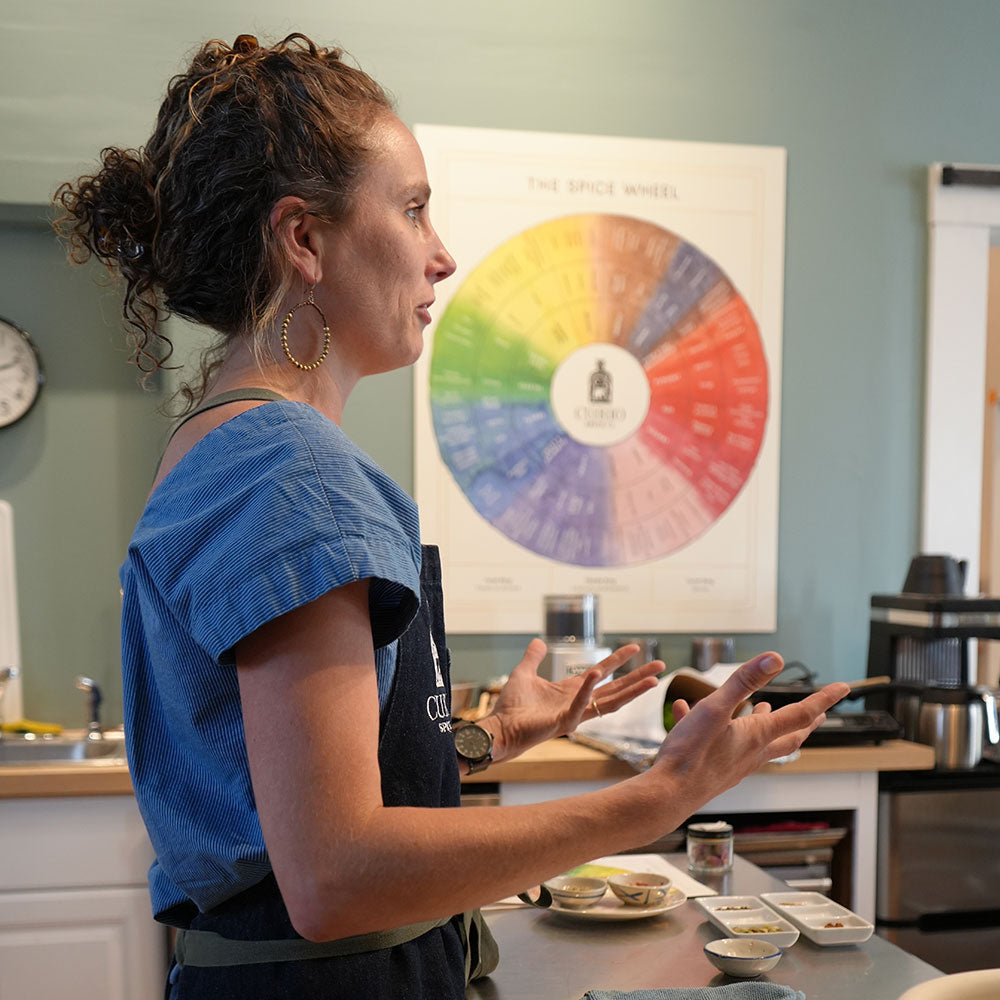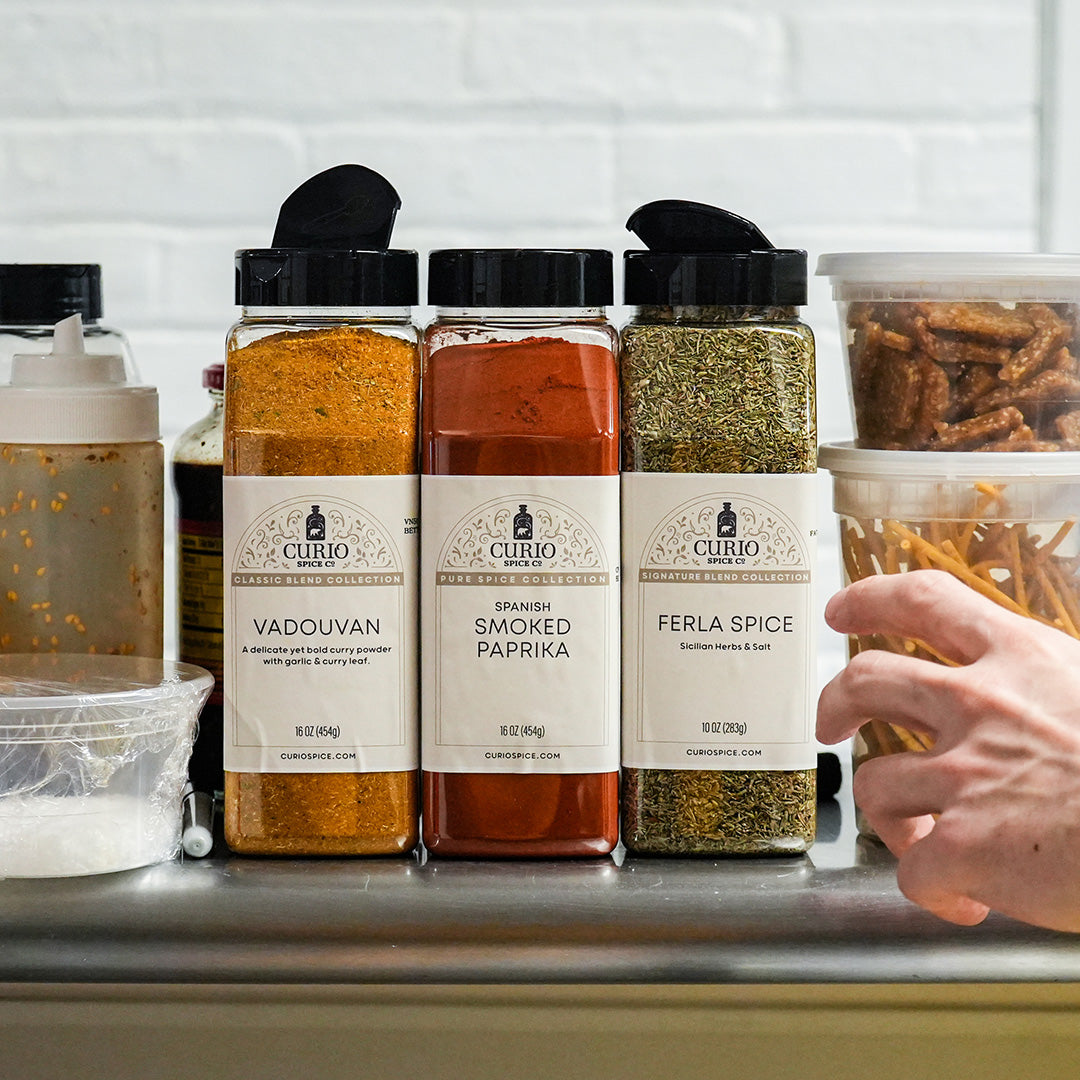There’s A Hummus Among Us!
If Middle Eastern cuisine were a theater, lamb kabob might play the dashing lead. Fatoush, a tangy salad tinged with sumac, and pilaf, a buttery rice with pine nuts, its trusty sidekicks. But off to the side, waiting patiently for its close-up, would be hummus, a velvety spread made of puréed chickpeas that has been a staple of Middle Eastern and Arabic cooking for centuries.
Across the Atlantic, hummus’s close-up is entering its fourth decade, and shows few signs of slowing down. More than a traditional spread served with pita, it has become a canvas for featuring countless specialty ingredients and spices. Today you can find recipes for all kinds of boundary-pushing hummuses: sweet potato hummus, avocado hummus, spinach-arugula hummus, and in 2019, Trader Joe’s even started marketing a chocolate-flavored dessert hummus. You name it and there’s a hummus for it.
In the spirit of invention and curiosity that hummus evokes, we recently hosted a competition within our ranks. We’ll reveal the winning hummus recipe at the end of this post. But first, let’s get better acquainted with the history of this dish, to help explain what makes it such a wonderful base for experimenting with flavor and spice combinations.

A legume by any other name…
The story of hummus can’t really be told without tracing the origins of its main ingredient: a tiny, beige legume we in the Americas call the chickpea (a word derived from the Middle French, pois chiche, which comes from the Latin word cicer). The sheer scope of this vegetable’s nomenclature speaks to its impact throughout history, as well as its migratory nature. The word hummus actually means “chickpea” in Arabic (the full Arabic name for the dish is hummus bi tahini, or chickpeas with sesame paste). In Spanish, it is garbanzo. In Turkish, nohut.
Chickpeas are said to be the world’s oldest cultivated legume. As a high density, low volume food, it was an efficient source of caloric intake for early peoples. Archaeologists have found evidence of domesticated chickpea production dating back to 8000 BC in Turkey and the Levant. By 6000 BC, chickpeas had made their way to the Mediterranean, and to India around 3000 BC.
But it wasn’t until the fourteenth century that recipes resembling hummus, containing puréed chickpeas, began appearing in medieval cookbooks across Cairo. (For the culinary history nerds amongst us, Lilia Zaouali’s Medieval Cuisine of the Islamic World: A concise history with 174 recipes has re-printed some of these recipes!) The hummus we know and love today, which contains chickpeas, sesame paste, garlic, lemon juice, and olive oil, didn’t appear in cookbooks until the 18th century in Damascus (though it is likely the dish predates this).
Today, hummus bi tahini is consumed by countless peoples across the Mediterranean, Middle East, and North Africa, yet how it is served differs depending on where you go. In Lebanon, for example, it is viewed as more of a side dish, or an appetizer, to a meal, often garnished with spices like cumin and paprika, or fresh herbs like parsley, and served with pita or flatbread. In Israel, on the other hand, as it is cheap, simple to make, and quite filling (and also completely kosher), it has become a staple dish of the working class. There are restaurants which have become famous serving hummus as the meal itself. In these instances, it can come served with toppings, like caramelized onions, sautéed mushrooms, ground beef, and boiled eggs.
Why is it a great canvas for spice?
Injecting flavors into the spread itself is a more recent trend that has appeared as hummus has adapted to different culinary settings across the Western world.
There are a few reasons why hummus lends itself well to this type of adaptation. First is its flavor profile and texture, a consequence of its simple ingredient list. The nutty creaminess of the chickpeas, the savory quality of the garlic, the tanginess of the lemon juice; all combine to create a velvety base that does not overpower the palette. Depending on the spices you’re wanting to highlight, you can tone certain ingredients down to accommodate. (Note: The smoothness of your hummus can be increased by removing the skins of the chickpeas after boiling them and before puréeing—a tedious process, but one that makes a big difference.)
But perhaps one of the biggest selling points for hummus in the modern, health-conscious West, is that it is extraordinarily good for you. For over a decade now, chickpeas have been marketed as a “superfood.” Whereas other dips may achieve a similar texture by upping the butter or cream, hummus’s density is low in fat and highly nutritious. Also, as hummus does not require any animal byproducts, it is a delicious and filling option for vegan and vegetarian eaters. (Fun fact: "Aquafava”—a.k.a. the water leftover from soaking chickpeas—is a great vegan alternative to egg whites in cocktails!)

Why make your own?
The answer to that is pretty straightforward: Because you can! It’s possible to buy ready-made hummus at the supermarket (and these days, there’s no shortage of options). But with just 4-5 ingredients, a food processor, and a little bit of elbow grease, you can design the hummus bi tahini of your dreams. Here are a couple of quick tips to help get you started:
- Soak dry chickpeas overnight and boil with a bay leaf and/or a single long pepper until tender. Drain.
- Chickpeas love liquid! If your hummus gets stiff overnight, just mix in some hot water before serving.
Once you’ve mastered that, we encourage you to try experimenting with some spices. Spices are great mixed in and also as a garnish - or both! We recommend crunchier spices for garnish. Some of our favorite blends to use as a topping on hummus include:
- Za'atar Spice, a traditional Middle Eastern blend combining oregano, sesame seeds, sumac, olive oil, and Dead Sea salt. Ours comes from Canaan Fair Trade, a Palestinian Coop based in Jenin supporting women's cooperatives and smallholder farmers.
- Elmendorf Everything, our version of an everything bagel spice, crafted especially for our friends at Elmendorf Bakeshop.
- Herbes de Romance, our twist on the classic Herbes de Provence spice, containing local Massachusetts rosemary, lemon verbena and wild Maine oregano (among other things!)
- Rose Harissa, featured in our teammate Miranda’s hummus recipe, which won our in-house hummus-tasting competition!
Classic Hummus with Rose Harissa Quick Pickled Onions
By Curio Team Member, Miranda Harter
(Some measurements and methods taken from Cook's Illustrated 'Ultra Creamy Hummus")
For Hummus:
- 1/2 pound dry chickpeas, soaked and simmered till soft (I prefer Rancho Gordo chickpeas) -or- 2x 15oz cans chickpeas, rinsed and drained (I like Pastene brand)
- 1/2 cup good tahini
- 1/2 cup reserved cooking liquid
- 1 lemon, juiced (about 1/3 cup, use another lemon if needed)
- 2 tbsp good olive oil, more for drizzling
- 1 1/4 tsp ground cumin, more to taste
- 1/2 tsp comapeño chile powder*, more to taste
- 1 tsp salt
For Topping:
- 1 small red onion, diced
- 1 tbsp Rose Harissa
- 1-2 tbsp apple cider vinegar
- Pinch salt
Prep:
(Make topping first, or a few hours before you want to serve the hummus. It will keep about 4-5 days in the fridge before it gets watery)
- Dice red onion and mix with Rose Harissa in an acid safe bowl. Add apple cider vinegar a little at a time until the spice mix is wet and onions are coated with spice. Shouldn't be too dry or too soupy. Add more spice blend if your onion was a little on the large side. You want the onions to be thoroughly coated with spice and vinegar! Add pinch salt, cover and set aside on the counter to marinate for 1-5 hours
- Put chickpeas in a pot and cover with water by about two inches. Bring to a boil and then simmer till chickpeas are creamy and skins are floating to the surface, about 15-20 min
- Place measuring cup to catch the boiling liquid under your colander, and drain chickpeas. Set the reserved liquid aside
- Put chickpeas back in pot and cover with cool water. Agitate the beans to get more skins to come off, or manually remove by gently squeezing the beans. This is easier and more satisfying than you might imagine! Skim off skins by partially draining water. Repeat about 3-4 times, till most chickpeas are skinless (or you get bored). You should have about 1/3 to 1 cup skins. The more skins you remove the creamier the hummus will be. Discard skins and drain chickpeas a final time
- Mix 1/4 cup reserved boiling liquid, 1/3 cup lemon juice, cumin, chile powder, salt together. Put beans and liquid in a food processor or good blender and blend for about 1 minute or till pulverized
- Stir together tahini and olive oil and pour into food processor. Blend another minute, scraping down sides if needed
- Add more reserved boiling liquid if hummus is too stiff, keeping in mind it will thicken in the fridge. I find 1/2 cup total is usually good, but you'll need more liquid if you removed fewer skins.
- Taste and add more cumin or salt if needed, blend to mix
To serve:
Spoon hummus into a shallow soup bowl and drizzle with olive oil. If the hummus was in the fridge, warm it up for 15-30 second in the microwave to get all the flavors to come out. Dollop some Rose Harissa onions in the center of the hummus and serve with some warm pita and/or slices of red bell pepper. Also good with Za'atar if you aren't feeling onions at the moment (this makes a prodigious amount of hummus, so options are good!)
*Any light flavored chile powder can be used. The comapeño is nice because it does not alter the color of the hummus. Cayenne would also work, as would sweet paprika.
Post by Karine Vann








Leave a comment